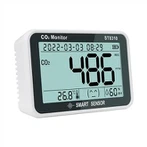Is there a time limit for the electrode to be immersed in the solution when the pH meter is used?
The pH meter/acidity meter electrode must be soaked before use, because the pH meter/acidity meter bulb is a special glass membrane, and there is a thin hydrated gel layer on the surface of the glass membrane, which can only be combined with the fully wet condition. The H+ ions in the solution have a good response. At the same time, the asymmetric potential can be greatly reduced and stabilized by soaking the glass electrode. The pH meter/acidity meter glass electrode can generally be soaked in distilled water or pH meter/acidity meter 4 buffer solution. It is usually better to use pH meter/acidity meter 4 buffer solution. The soaking time is 8 hours to 24 hours or longer, depending on the thickness of the bulb glass film and the aging degree of the electrode. At the same time, the liquid junction of the reference electrode also needs to be soaked. .Because if the liquid junction dries up, the potential of the liquid junction will increase or become unstable, the soaking solution of the reference electrode must be consistent with the external reference solution of the reference electrode, that is, 3.3mol/L KCL solution or saturated KCL solution. The time is usually a few hours. Therefore, for the pH meter/acidity meter composite electrode, it must be immersed in the pH meter/acidity meter 4 buffer solution containing KCL, so that it can work on the glass bulb and the liquid junction at the same time. . Special attention should be paid here, because in the past, people used a single pH meter/acidity meter glass electrode to soak in deionized water or pH meter/acidity meter 4 buffer solution, and later used pH meter/acidity meter composite electrode. Using such a soaking method, even some incorrect instructions for use of the pH meter/acidity meter composite electrode will carry out this wrong guidance. The direct consequence of this wrong soaking method is to make a pH meter with good performance. The meter/acidity meter composite electrode becomes an electrode with slow response and poor accuracy, and the longer the soaking time, the worse the performance, because the KCL concentration inside the liquid junction (for example, inside the sand core) has been greatly reduced after a long soaking time. The junction potential increases and becomes unstable. Of course, the electrode will recover as long as it is re-soaked in the correct soaking solution for several hours.
In addition, the pH meter/acidity meter electrode should not be immersed in neutral or alkaline buffer solutions. Long-term immersion in such solutions will make the pH meter/acidity meter glass membrane unresponsive. Correct pH meter/acidity meter electrode immersion Liquid preparation: take a bag of pH meter/acidity meter 4.00 buffer (250ml), dissolve it in 250ml pure water, add 56 grams of analytical pure KCl, heat properly, and stir until it is completely dissolved. There are bottled electrodes on the market. There are two kinds of soaking liquids, 500ml and 50ml. These soaking liquids contain preservatives, which will not mold and deteriorate. The shelf life is one year.
In order to make the pH meter/acidity meter compound electrode more convenient to use, some imported pH meter/acidity meter compound electrodes and some domestic electrodes are equipped with a sealed plastic vial at the head of the pH meter/acidity meter compound electrode, and the electrode is soaked inside. The electrode head is soaked in it for a long time, and it can be pulled out and washed during use, which is very convenient. This storage method is not only convenient, but also very beneficial to prolong the life of the electrode, but the soaking solution in the plastic vial should not be polluted, pay attention to replace.






